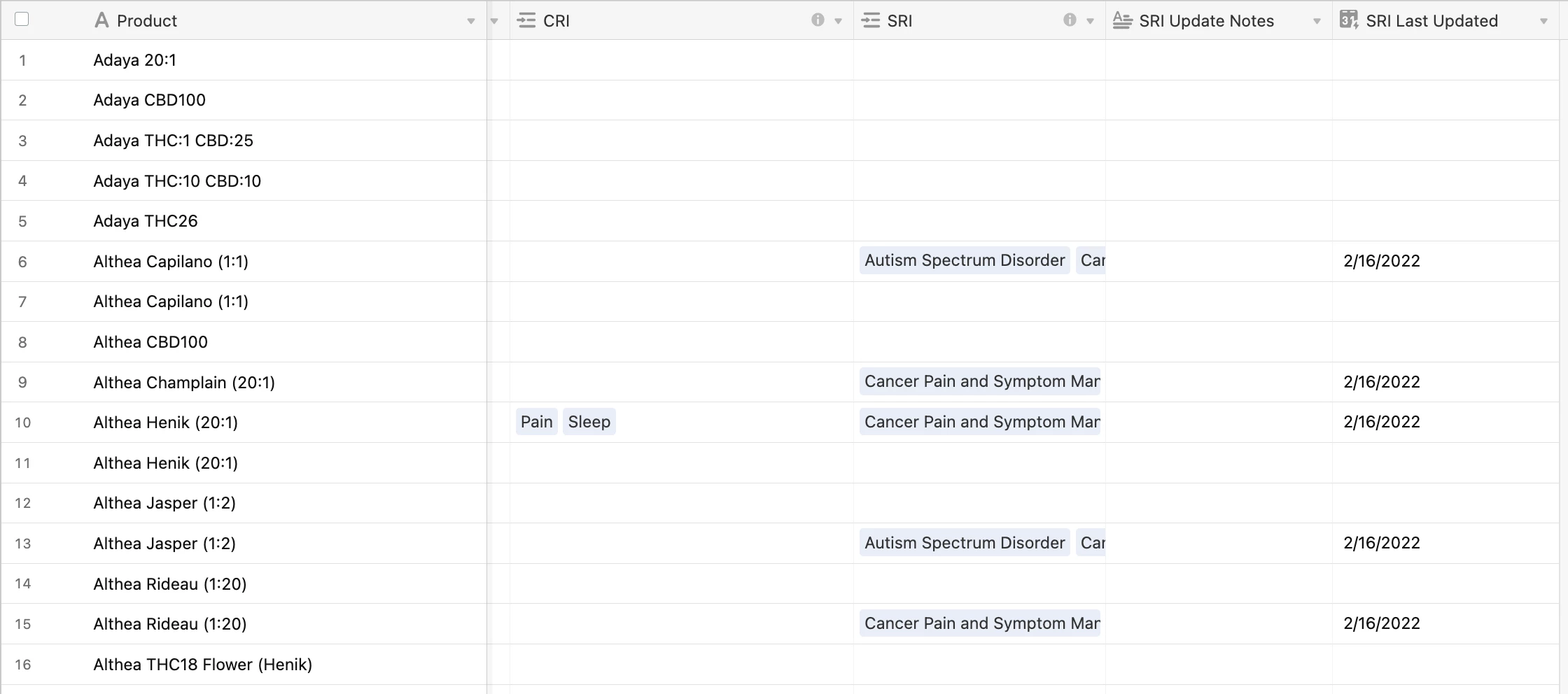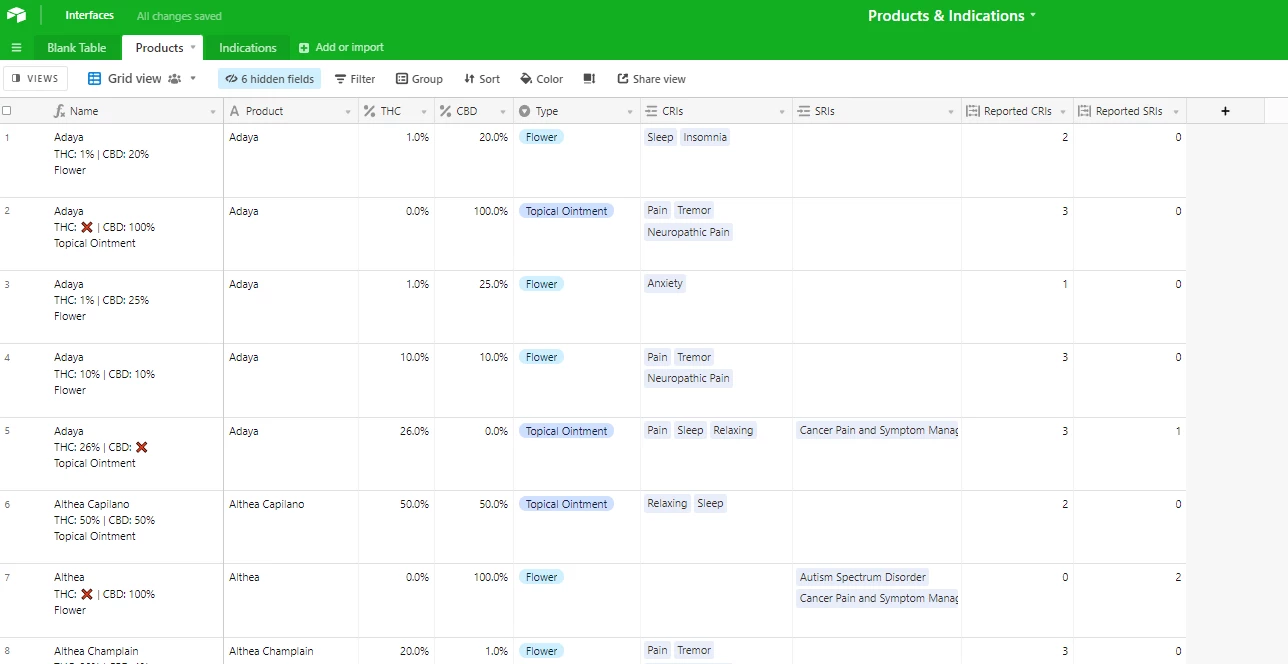Hey everyone! Fairly new to airtable and still learning about automations and formulas. We are creating a fairly complex app for medicinal products.
In our base we have a products table and an indications table. An example of an indication would be “Pain” - This is linked to a stacker front end. What I’m trying to achieve is to be able to count how many times a single indication has been given to a product. For example: When someone is adding an indication such as “Pain” to a product they can see “5 others added this indication”. and once added it’s then updated so that it appears as 6, 7 so on.
I have been able to automate a count which listens for when an indication is added and ticks up however this doesn’t work because each time any indication is added or removed it continues to tick up. Trying to figure out how to make it dynamic so that it can update and change for any product.
Any help would be greatly appreciated











